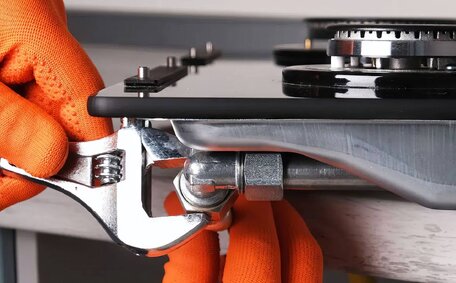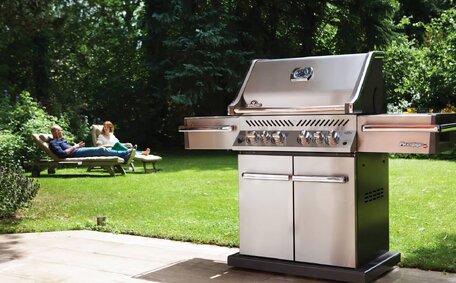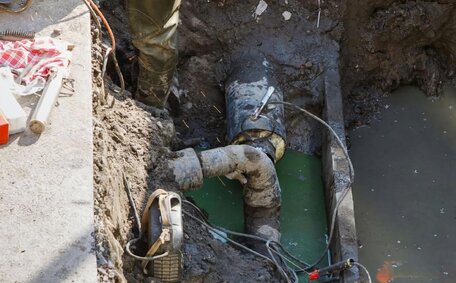
The role of gas fitting in kitchen renovations
When renovating your kitchen, it’s important to engage a licensed gas fitter to safely install, replace or alter any gas appliances and pipes. This ensures
Read MorePipe relining is a trenchless method of repairing damaged pipes without the need for full replacement. It involves inserting a resin-saturated liner into the existing pipe and curing it in place to form a new, jointless pipe-within-a-pipe.
One key consideration when relining pipes is ensuring the liner will fit inside the host pipe. There are minimum diameter requirements that must be met for relining to be feasible. This introductory article will provide an overview of pipe relining and discuss the factors that influence minimum diameter requirements.
We’ll look at how pipe material, age, condition and purpose impact the minimum size needed for relining. Recommendations will be provided for common situations encountered in residential and commercial settings. Useful tips on measuring pipe diameters and inspecting pipe condition will also be covered.
Understanding the minimum diameter requirements for relining is essential for determining if this trenchless method is suitable for a given project. Read on to learn more about critical considerations when evaluating relining options.
The typical minimum diameter requirements for pipe relining can vary depending on the material of the existing pipe. Here are some general guidelines:
For PVC pipes, the minimum diameter is usually around 100mm or 4 inches. Any PVC pipe smaller than this would not be suitable for relining.
Old cast iron pipes often have a lot of buildup on the inside walls, which reduces the effective inner diameter. For cast iron, the minimum size for relining is typically 150mm or 6 inches.
Concrete pipes should have a minimum inner diameter of 200mm or 8 inches for relining to be feasible.
With old clay pipe, the minimum diameter needed is usually around 150-200mm or 6-8 inches.
For steel pipes, the minimum diameter is normally 100-150mm or 4-6 inches.
It’s important to measure the inner diameter of the existing pipe rather than relying on the stated nominal size, which refers to the outer diameter.
The actual inner diameter may be reduced due to internal corrosion, deposits or damage. Accurately determining the clear inner diameter is key for assessing the feasibility of relining specific pipes.
When it comes to sewer lines, larger minimum diameters are typically required for relining compared to pipes serving other purposes. Many experts recommend a minimum of 200mm or 8 inches for relining sewer lines.
There are a few reasons why the minimum size for sewer relining tends to be greater:
While some localised sewer sections may potentially be relined down to 150mm or 6 inches, opting for 200mm or larger diameters provides more capacity and reduces maintenance needs.
When evaluating the feasibility of relining ageing or deteriorating sewer lines, carefully measure the inner diameter and aim for the largest size possible. This provides long-term functionality and helps prevent future operational issues.
When it comes to residential and commercial drain lines, a minimum diameter of 100mm or 4 inches is typically recommended for pipe relining projects. However, there are several factors that may require a larger minimum diameter:
When evaluating drain lines for relining, the key steps include:
With accurate measurements and a clear understanding of the drain line’s condition, purpose and applicable codes, the minimum diameter requirements for relining can be determined. Upsizing aged drain lines during relining often provides benefits in terms of flow capacity, ease of maintenance and longevity.
When it comes to water lines, a minimum diameter of 20mm or 3⁄4 inches is typically recommended for pipe relining projects. However, there are some factors that may necessitate a larger minimum size:
Key steps when assessing water lines for relining include:
Meeting required water flow rates and pressure is imperative. Accurately determining the inner diameter and being mindful of applicable codes allows identification of the proper minimum size for relining drinking water lines.
Accurately determining the size of existing pipes is a critical step before undertaking any relining project. Here is a step-by-step guide on how to properly measure pipe diameter:
Accurately measuring the inner pipe diameter and accounting for wall thickness losses is crucial for determining if relining is feasible. This process highlights any problem areas and provides critical data for selecting the proper liner dimensions.
It is crucial to thoroughly inspect the condition of pipes before undertaking any relining project. Examining the pipe with a camera and diagnosing any issues can help avoid complications down the line.
Look for common problems like cracks, holes, collapsed sections, severe corrosion, scale buildup and root intrusion. Take note of joints, connections and any changes in material or diameter. Also check for leaks, which may indicate larger underlying issues.
Identify any sections that need repair or replacement due to excessive damage. This prevents weaknesses that could cause liner failure after installation. For pipes with substantial blockages, cleaning and descaling may be necessary before relining.
Evaluating the structural integrity and exact dimensions of the existing pipe through comprehensive inspections allows proper design and preparation for relining. This helps minimise risks and leads to successful, long-lasting pipe renewal.
In certain scenarios, it may be possible to use a smaller than typically recommended diameter when relining pipes. However, this should only be considered after thorough evaluation of all factors.
Using a narrower liner can potentially save on project costs. However, the risks include reduced flow capacity, clogging and premature failure. It is not advisable for main sewer lines, high flow applications or pipes with existing obstructions.
A smaller diameter may be feasible for straightforward residential drain lines with no expected increase in demand. Shorter runs of water pipe could also potentially be relined to a narrower size if allowed by code.
Any use of reduced diameters should involve careful measurement, pipe condition assessment and verification that capacity needs will continue being met. Obtain approval from local authorities and ensure compliance with regulations.
While relining to a smaller size can sometimes work, it requires proper vetting and planning. Following the typical minimum diameters recommended for each pipe type and application is generally the wisest approach.
When determining the minimum diameter for relining based on the pipe’s intended use, here are some general recommendations:
A minimum of 200mm (8 inches) is advisable for most sewer line relining projects to provide adequate capacity and prevent blockages.
100mm (4 inches) is usually sufficient for straightforward residential drain lines. Commercial or high-flow drains may need 150mm (6 inches) or more.
20mm (3/4 inch) minimum for most residential water lines. Larger diameters of 25mm (1 inch) or more may be required for main lines.
PVC and steel pipes can often be relined down to 100mm (4 inches). Older cast iron normally needs 150mm (6 inches) minimum.
Always measure inner diameter accurately, inspect thoroughly and evaluate current and future needs when determining the minimum size for relining pipes based on their specific use.
Determining the minimum diameter requirements for pipe relining is key to ensuring a successful renewal project. As this article has covered, factors like pipe use, material, age and condition influence the minimum size needed.
For sewer lines, a 200mm (8 inch) minimum is typically recommended. Drain lines usually require at least 100mm (4 inches), sometimes more for commercial settings. Water lines can often be relined down to 20mm (3/4 inch), but may need larger diameters for mains.
Thoroughly cleaning, inspecting with a camera and accurately measuring the inner diameter are critical first steps. This helps identify any problem areas and the true usable size of deteriorating pipes. Minimum diameter guidelines should be followed, though exceptions can be made in certain lower-demand situations.
Relining can restore old pipes without the major expenses and disruption of full replacement. We hope this overview has provided useful knowledge about key considerations when evaluating minimum diameter requirements. Please contact Cecil Hills Plumbing if you have any other questions or need assistance with your plumbing projects.
When renovating your kitchen, it’s important to engage a licensed gas fitter to safely install, replace or alter any gas appliances and pipes. This ensures
Read MoreGas line repairs require a licensed plumber to locate any leaks, fix damaged pipes and fittings, and properly seal everything to prevent future issues. Contact our emergency plumbers for safe and proper gas line repairs.
Read MoreDuring emergency plumbing situations, crucial safety precautions include turning off the main water supply to prevent flooding, wearing protective gear to avoid injuries, clearing standing water to minimize damage, and calling a licensed professional plumber for assistance.
Read MoreCecil Hills, 2171 NSW
We will call back as soon as possible.




